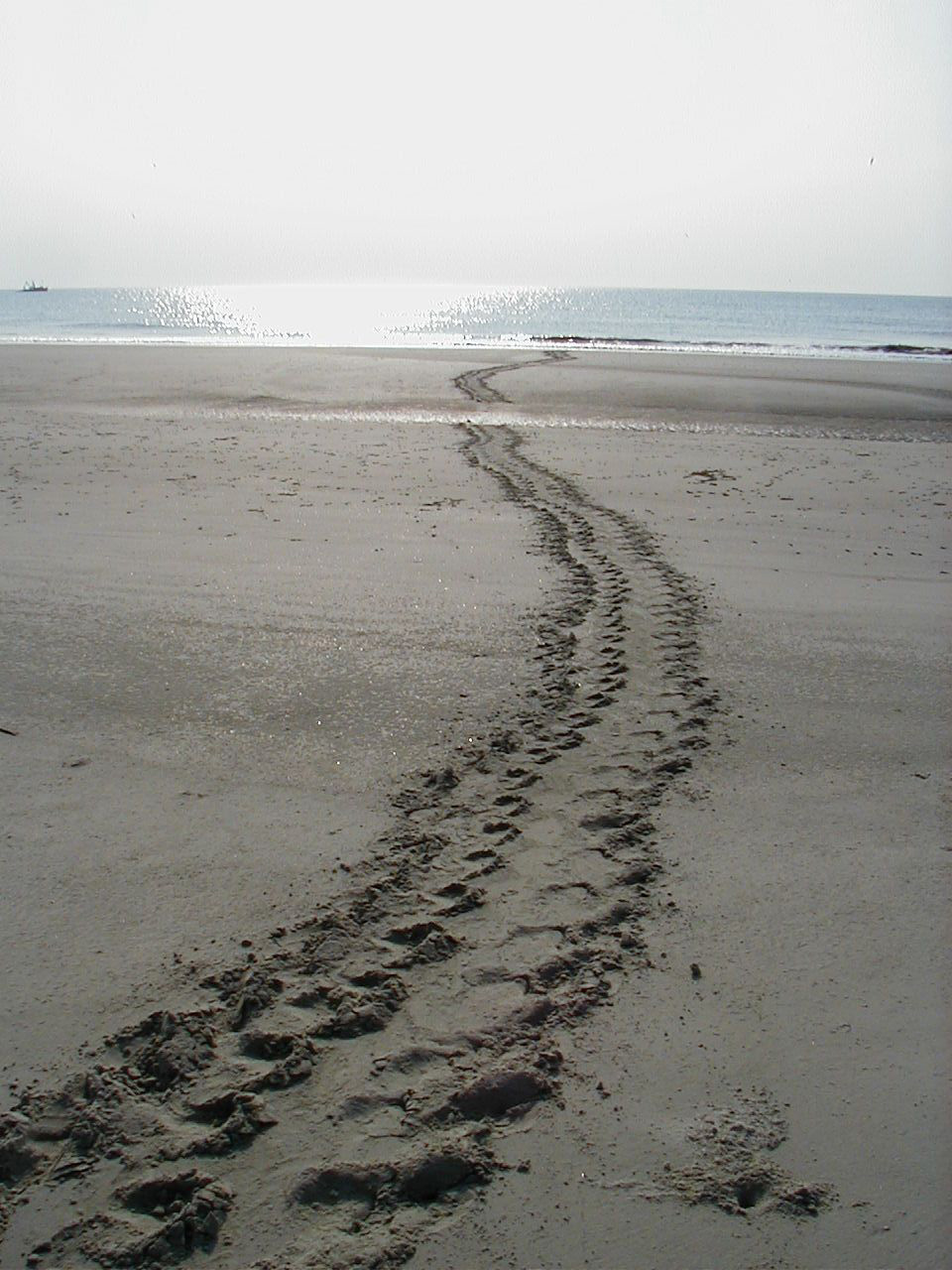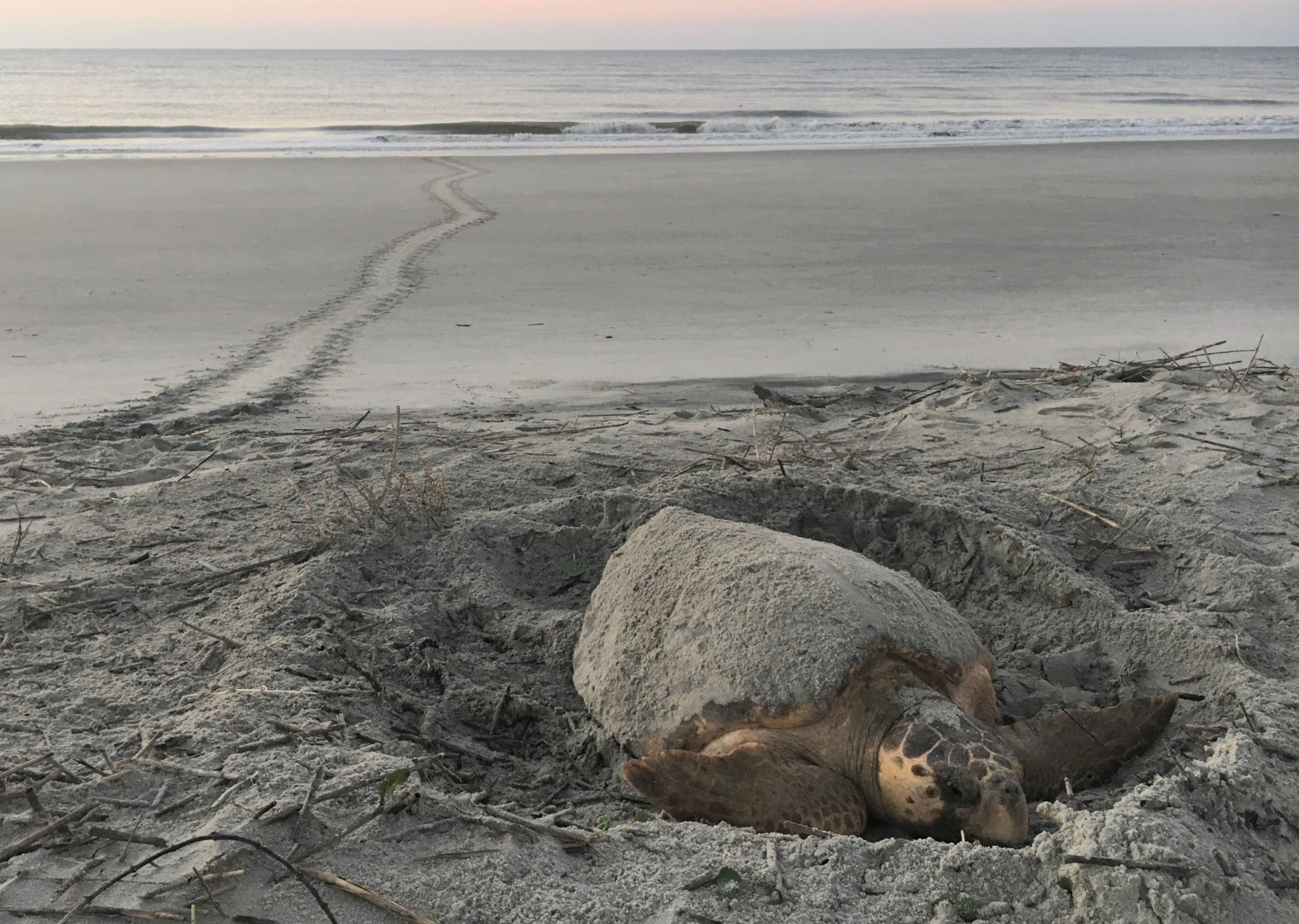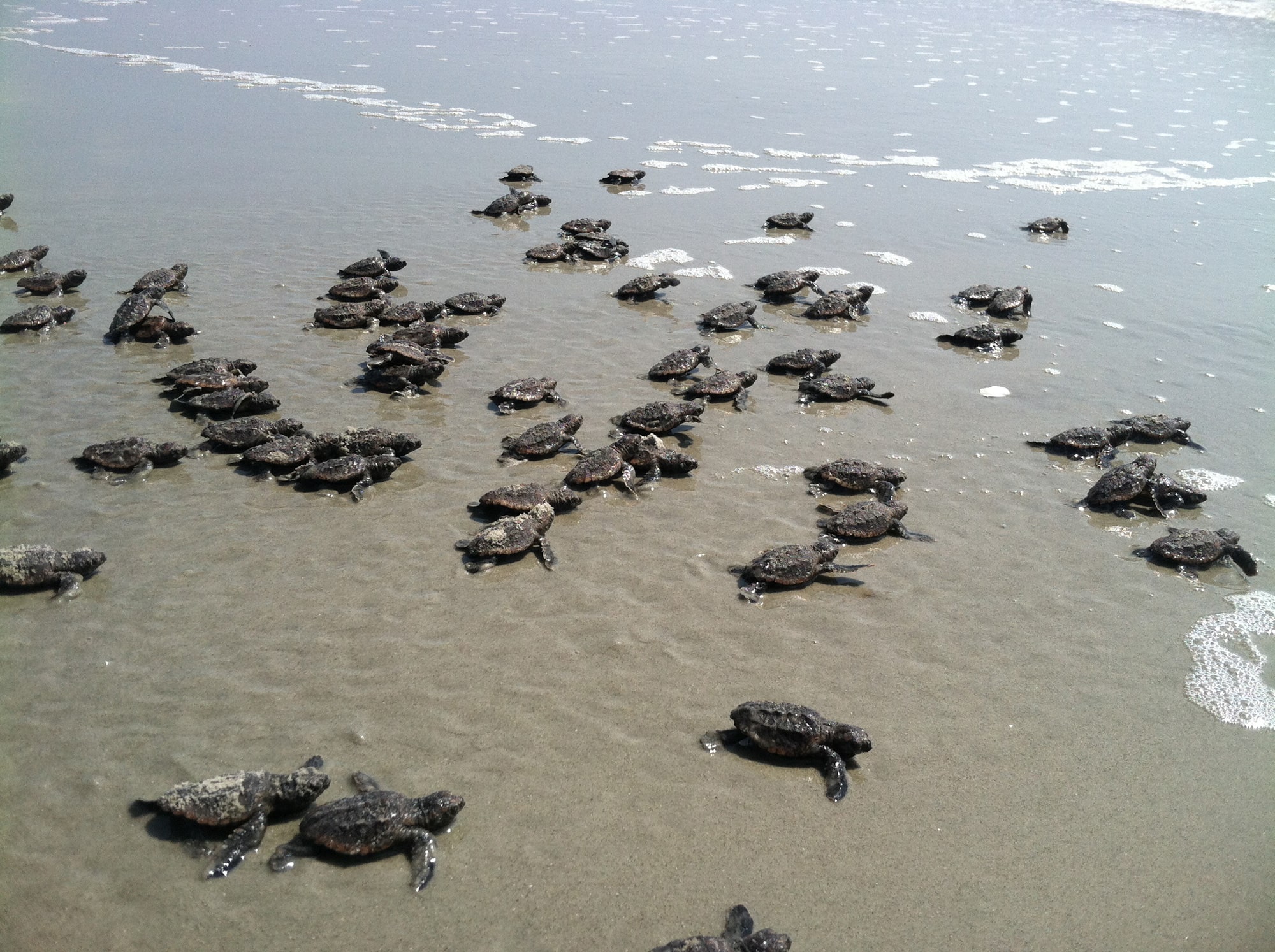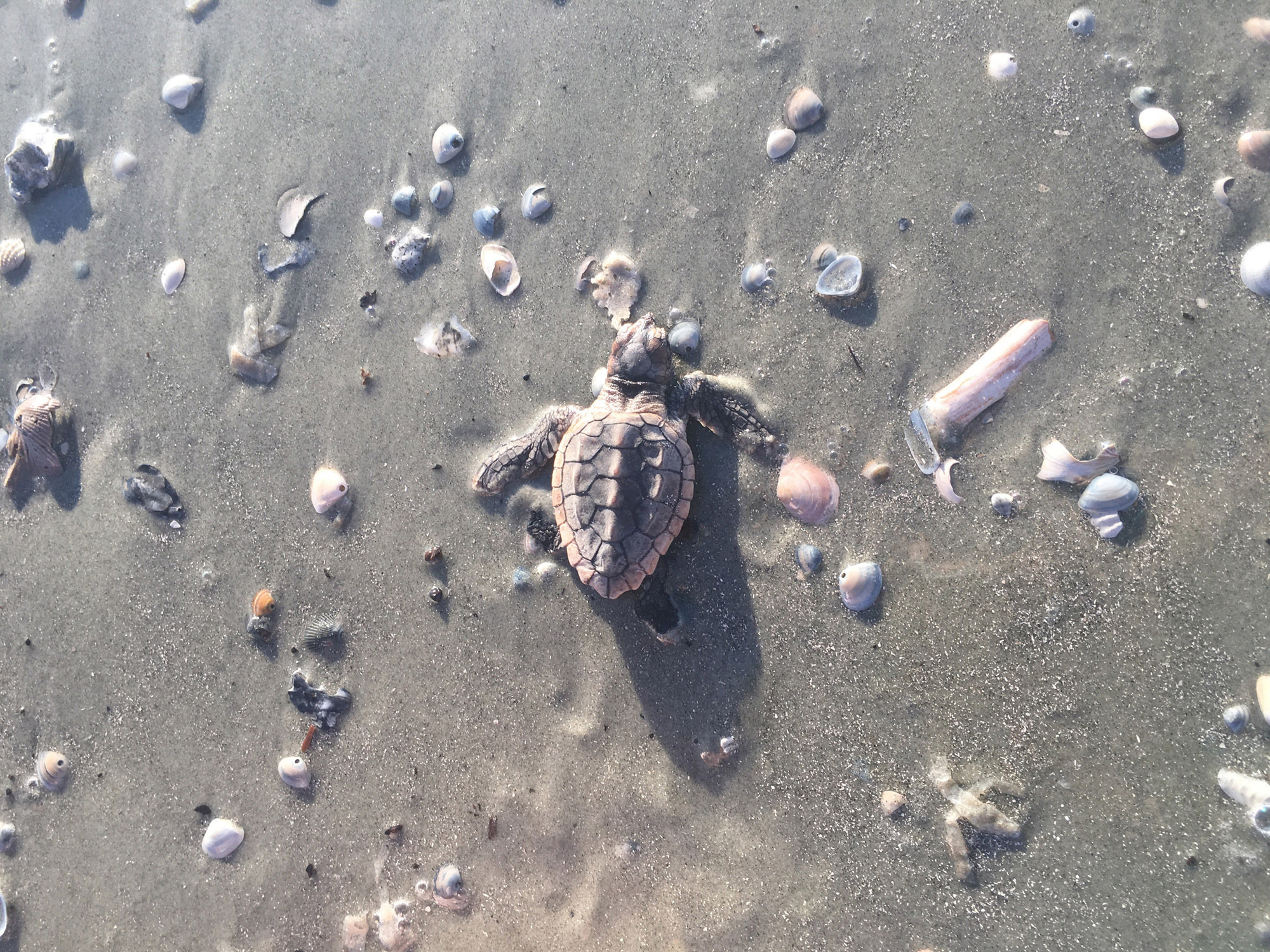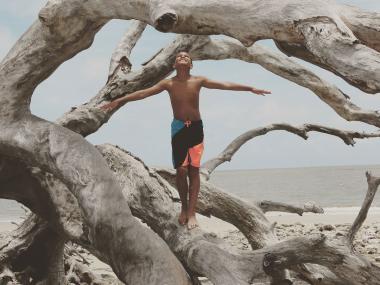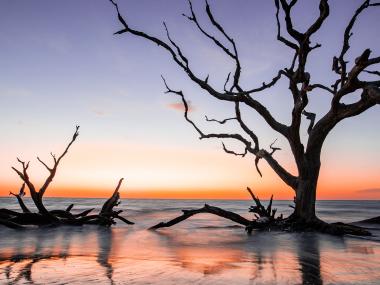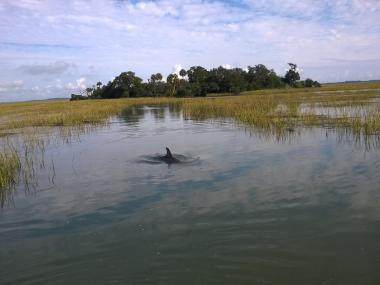How to See and Protect Sea Turtles on Georgia's Coast
The sun rises on Georgia's coast, illuminating chain-like weavings in the sand. During the night, some of Georgia's most compelling visitors came and went, leaving behind intricate footprints — and carefully covered nests holding the promise of the next generation.
More than 600 loggerhead sea turtles visit the Golden Isles each summer. Five of the world's seven kinds of sea turtles can be found along Georgia's coast, but loggerheads are the only ones to nest regularly on the barrier islands.
Loggerhead sea turtles are a threatened species, and recovery work is ongoing. The Georgia Department of Natural Resources (DNR) surveys, protects, marks and monitors sea turtle nests every year.
Most nesting occurs on Blackbeard, Ossabaw and Cumberland Islands, but those islands have limited public access. Visitors who want to experience the magic of sea turtle nesting should head to Jekyll Island.
Where to get up close to sea turtles
The Georgia Sea Turtle Center on Jekyll Island is Georgia's only sea turtle education and rehabilitation facility. Turtle walks, science lessons, facility tours and up-close sea turtle experiences are all available at the center.
Visitors who want to take a turtle walk should plan to visit between June 1 and July 28. On a turtle walk, you'll learn about the loggerhead life cycle, population threats and ways to contribute to sea turtle conservation.
Reservations are required, programs fill quickly, and participants must be six years of age or older. Groups max out at 25 people. The center is located at 214 Stable Road, Jekyll Island, GA 31527. For more information, visit https://gstc.jekyllisland.com.
How to protect and help sea turtles
Sea turtles need your help. During your visit to the Golden Isles, please keep these tips in mind:
- If you see a sea turtle on the beach, watch from a distance.
- When walking the beach at night, don’t use flashlights or flash photography. Unnatural light disturbs nesting turtles and prevents them from coming ashore.
- Minimize beachfront lighting during sea turtle nesting season. Turn off, shield or redirect lights.
- Leave turtle tracks alone. Researchers rely on them for surveys.
- Leave nests and hatchlings alone.
- Properly dispose of garbage. Turtles sometimes mistake plastic bags, Styrofoam and trash floating in the water as food.
- Remove recreational equipment from the beach at night. Lounge chairs, umbrellas, etc. can interfere with nesting and the seaward journey of hatchlings.
- Protect beach plants. They stabilize sand and the natural coastline.
- When boating, stay alert and avoid turtles. About 28 percent of the sea turtles found dead or hurt in Georgia suffered injuries consistent with being hit by a boat. Boaters who hit a sea turtle are urged to stand by and contact DNR at 800-2-SAVE-ME (800-272-8363).
- Report any dead or injured sea turtles seen at 800-272-8363. (If the turtle is tagged, include the tag color and number in the report if possible.)

